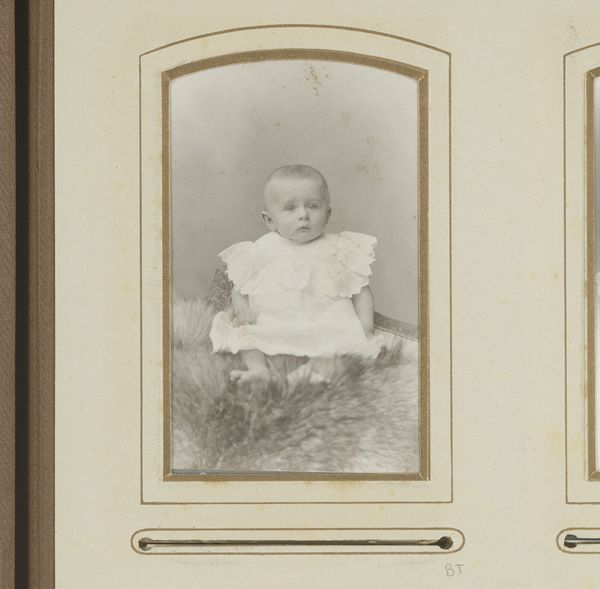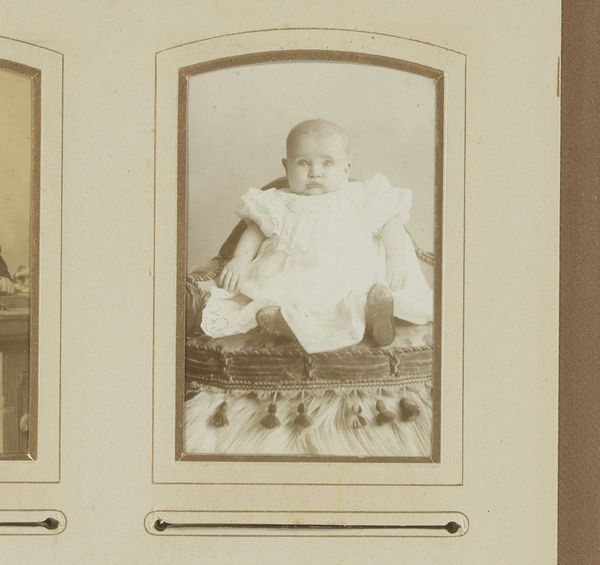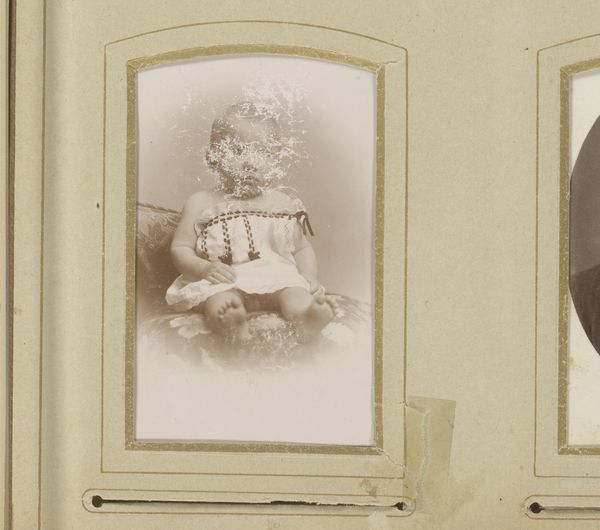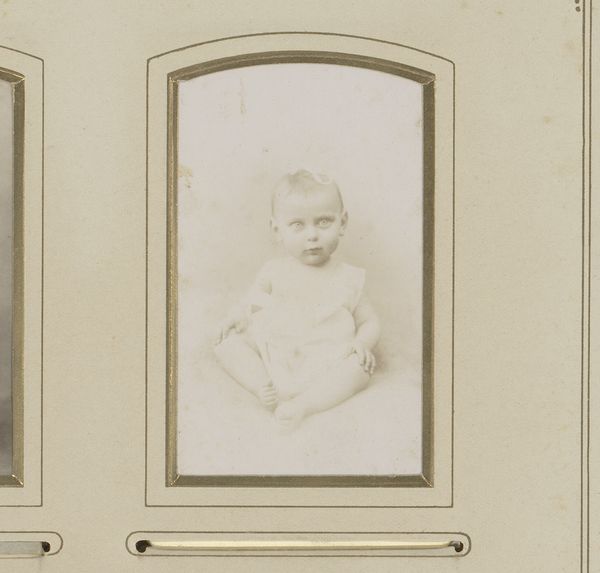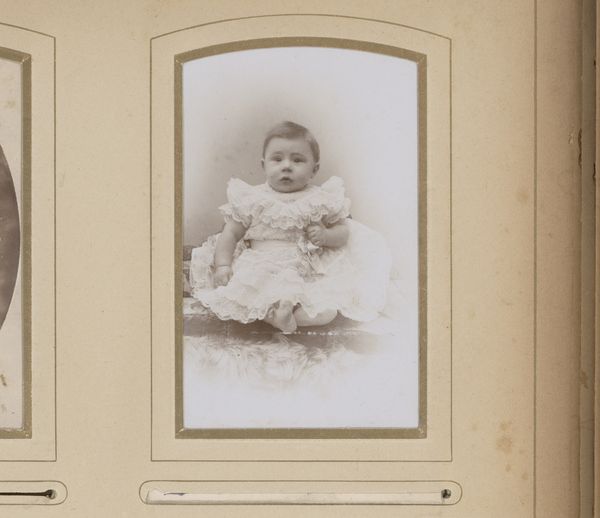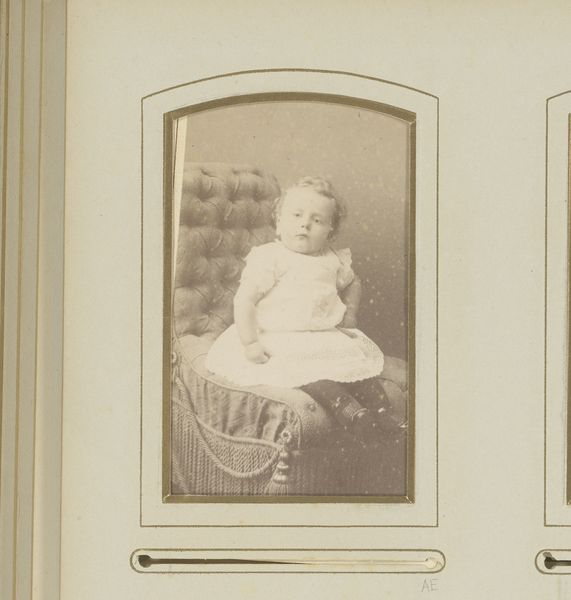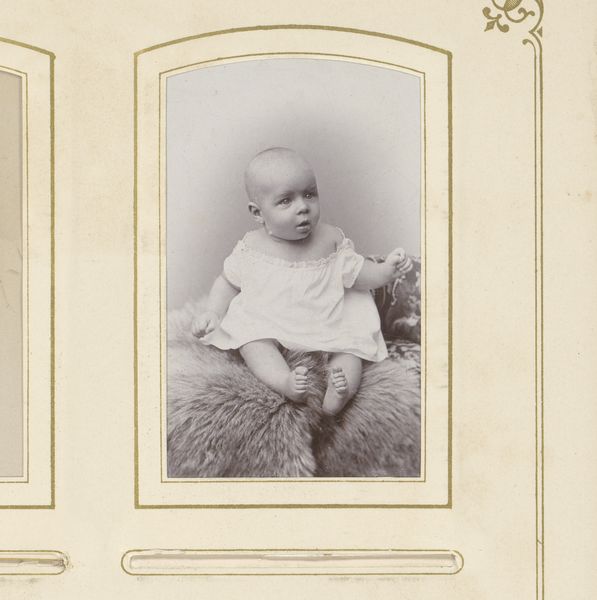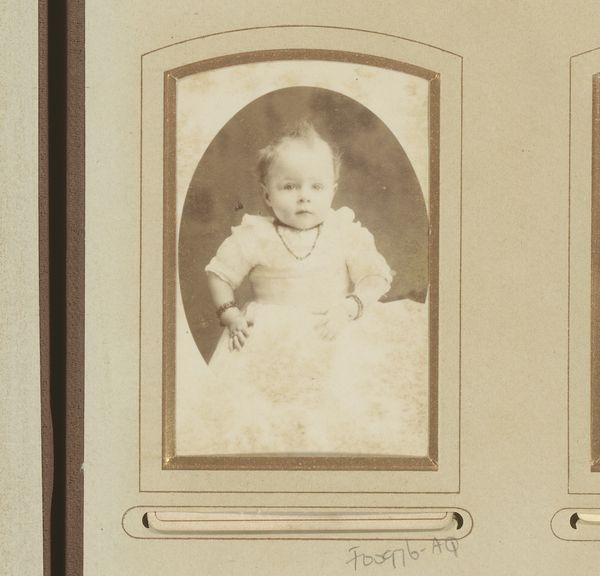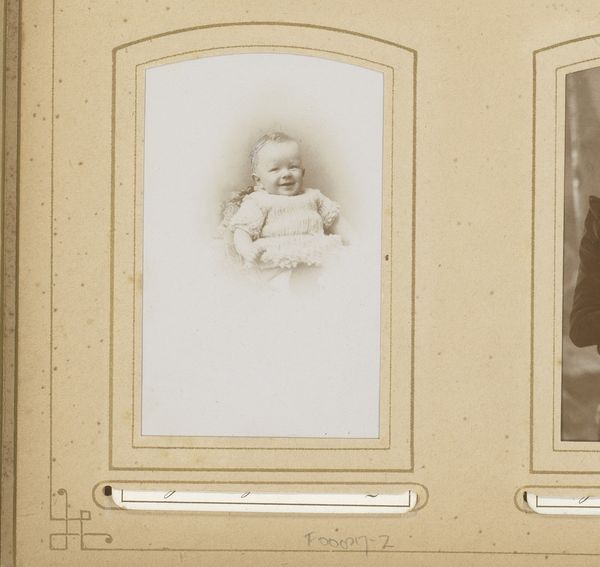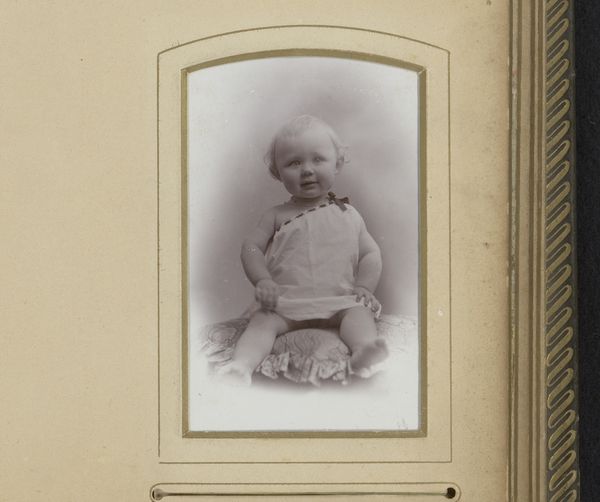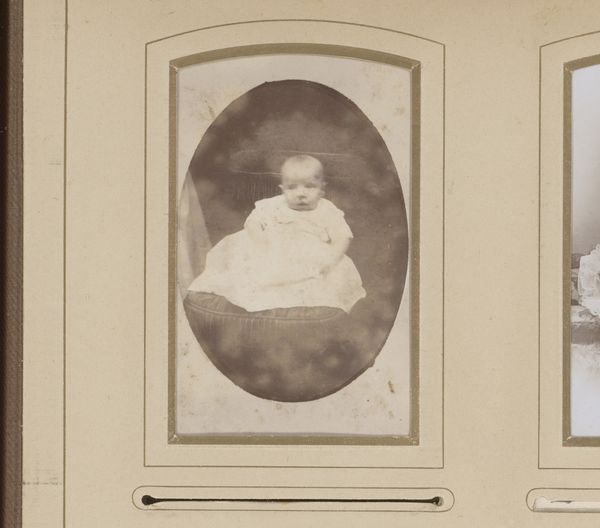
photography, albumen-print
#
portrait
#
still-life-photography
#
toned paper
#
light earthy tone
#
photography
#
child
#
earthy tone
#
albumen-print
Dimensions: height 80 mm, width 50 mm
Copyright: Rijks Museum: Open Domain
Editor: This is Stephanus Wilhelmus Eskes’ “Portret van een zittende baby,” created sometime between 1895 and 1921 using albumen print photography. It’s such a gentle, faded image. What strikes you about this photograph? Curator: As a materialist, I’m interested in the albumen print process itself. Albumen, derived from egg whites, creates that distinctive glossy surface and contributes to the print's characteristic fading and yellowing over time. The labour involved in preparing the albumen, coating the paper, and the darkroom processes – this all speaks to a very specific mode of photographic production and its impact on the image we see today. How does knowing this influences our reading of "gentle, faded?" Editor: That's fascinating! So the materials used and the processes involved are really integral to understanding the aesthetic qualities and how it presents to us today. Considering the labour involved, were these portraits like this one accessible to all levels of society or mainly to those with privilege? Curator: That’s a key question. Studio portraits were becoming increasingly popular during this period, signalling a rise of middle-class aspirations and disposable income. The very act of commissioning such a portrait speaks volumes about consumer culture and the desire to preserve and display personal identity through mass-produced imagery. What kind of consumer was likely to seek to capture this image and who had access? Editor: That reframes the photograph, highlighting the intersections between art, labor, social class, and even consumption habits of the era. Thanks, I learned so much! Curator: Likewise, thinking about production helps us question seemingly straightforward images and unpack their complex relationships with society.
Comments
No comments
Be the first to comment and join the conversation on the ultimate creative platform.
